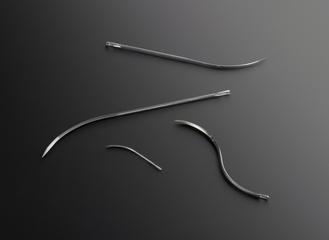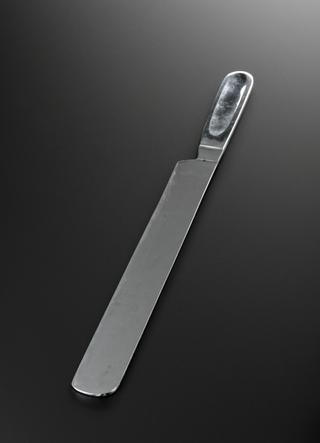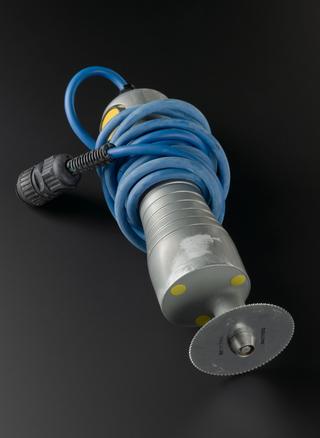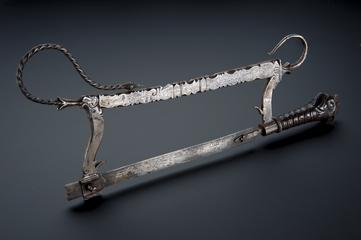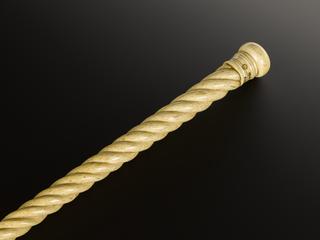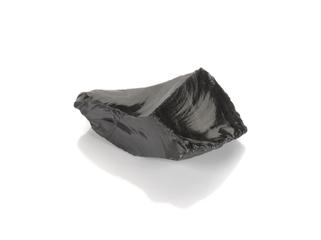
Padgett-Hood-type dermatome, England, 1978-1980
- maker:
- Downs Surgical Limited




Padgett-Hood's dermatome, steel, made by Down, Mitcham, Surrey, 1978-1980
The dermatome was an important new tool as it enabled surgeons to remove skin quickly and easily for grafting to treat burns victims. Often referred to as plastic surgery, these techniques were greatly advanced during the twentieth century, especially during and after the Second World War.
Used in skin-grafting to remove varying thickness of skin, the drum handle was held in the left hand and the knife handle was held in the right. The drum, coated with rubber, would be placed on the skin and the knife moved from side to side as the drum rotated. Skin removed from the top and middle layers sticks to the rubber coating and can then be grafted on to the damaged areas.
The instrument was created in 1939 and is named after its inventors, Earl Padgett (1893-1946), a plastic surgeon, and George Hood, a mechanical engineer.
